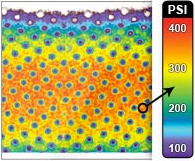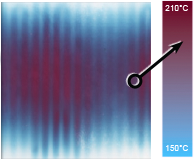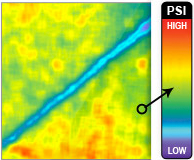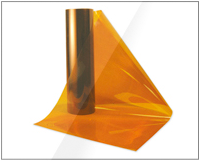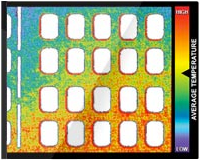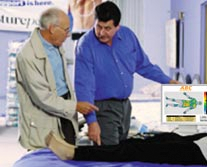Sealing Fuji Pressure-Sensitive Film for Protection Against Fluid Damage When Used Within a Joint
A.B. Liggins, K. Surry and J.B. Finlay.
Purpose
To investigate the effects on the pressure-response of Fuji Prescale pressure-sensitive film caused by sealing it within a liquid-proof packet.
Method, Results and Discussion
Fuji pressure-sensitive film consists of an "A-film" and a "C-film". The application of pressure bursts microscopic ink bubbles on the A-film, producing a pressure-dependent stain on the C-film; this response requires calibration for temperature and relative humidity (R.H.). Protective layers placed either side of the film, to prevent invitro fluid damage, have been described in the literature; however, a detailed discussion or validation of the corresponding calibration have not been presented. Therefore, the object of this work was to investigate the effects of protective sealing on the pressure-response of Fuji film.
Fifty 35-mm-square pieces of both A- and C-film were cut from "superlow"- grade Fuji film, forming a control-group. A further fifty pairs of A- and Cfilm pieces were each sealed between two layers of "Tegaderm" adhesive dressing material (3M, Canada), forming fifty sealed packets. The two groups were used in the following protocols:
- 25-mm-diameter calibration stains were produced using a finely-ground punch and base-plate for twelve pressures between 0.25 and 3 MPa. Loading was applied under a regime of a one-minute linear ramp up to the required load, a one-minute hold at that load, followed by a oneminute linear ramp down to a 10 N pre-load. This procedure was conducted at 23 °C and 48% R.H.
- Three calibration stains were produced, from both groups of film, at nominal pressures of 0.5, 0.9, 1.8 and 2.5 MPa. This procedure was conducted on three separate days, with mean (±SD) relative humidities of 59.4 (0.5)%, 54.2 (0.3)% and 66.2 (0.7)%; the temperature was 23 ±1EC during these tests.
The stains were digitized and their optical densities recorded using a PCbased digitizing system. The data from protocol 1 produced a graph of pressure against optical density; a fifth-order regression curve, applied to these data, showed differences between the responses of the two groups. From protocol 2, a combined analysis of variance showed significant differences between groups at both 1.8 MPa/59.4% R.H. and at 2.5 MPa/59.4% R.H.
These results show that, while it is possible to obtain a valid calibration from sealed Fuji film, its response is significantly different to that from the control-group under some ambient conditions. Therefore, the use of sealed Fuji film in a test situation requires a calibration to be conducted with sealed film.
An additional observation was that stains from the sealed-group exhibited a less even distribution of colour when compared to the output from the control-group. This phenomenon requires further investigation.
Conclusion
Sealing Fuji Prescale pressure-sensitive film has a significant effect on its response under some ambient conditions; however, a valid calibration of the sealed film is still possible; this calibration should be conducted with sealed film.
Significance
Experiments conducted using sealed Fuji film and which use unsealed material to obtain calibration data may produce erroneous results.




